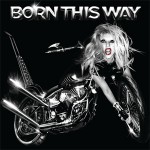Sound and Vision: Why Recording Artists Should Look on the Bright Side of Piracy
posted in: Features • Pop
 I’m a music fan that didn’t have a lot of pocket money as a kid. I bought what I could afford and taped the rest off radio or made a tape from my friend’s copy of the album.
I’m a music fan that didn’t have a lot of pocket money as a kid. I bought what I could afford and taped the rest off radio or made a tape from my friend’s copy of the album.
That’s what John Taylor of Duran Duran recently told Time Out Melbourne on the subject of illegal downloading. When I read Taylor’s comments, I applauded as if his band had just completed a rousing encore of Skin Trade. Finally, a pop star who understands what it’s like to be low on cash but high on music.

Back in the old pre-Internet days, before iTunes, Amazon and having access to the latest hits 24/7 on YouTube, if you couldn’t afford to pay to listen to the music you loved anytime you wanted to, you had to improvise. For me, and, apparently, for Taylor, that meant pushing a tape recorder up the speakers of the radio, waiting for your favorite song to come on, pressing play when it did, and praying for no outside noise to interfere with the sweet music coming from the speakers.
The result wasn’t audio perfection. The intros were usually cut off, and on a scale from one to ten, the sound quality was hovering around a three. I remember taping Loretta Lynn’s 1982 hit “I Lie” from Bob Kingsley’s American Country Countdown (later, I added Casey Kasem’s American Top 40 to my weekend radio-taping ritual), and right when the chorus kicked in, the phone rang, and the tape recorder picked it up. To this day, every time I listen to the song, when Loretta gets to the chorus, I expect the phone to ring.
My early improvisational method of owning my favorite songs fueled my love of music. It led to my career as a music journalist, and an adulthood during which I’ve spent a small fortune giving back to the industry that gave so much to me as a kid. (And yes, that includes big bucks spent on numerous Loretta Lynn compilations and a concert she co-headlined with George Jones and Conway Twitty at the University of Florida when I was a student there.)
 I’m not saying that every kid who downloads music illegally today will grow up to fill the coffers of pop stars, but if they like what they hear, they might form special bonds with the artists. When Lady Gaga, or Madonna, comes to town, it’s not like you can download the concert experience. You have to pay for it in order to enjoy it, and if you already know the music, you’re more likely to splurge on the price of a concert ticket.
I’m not saying that every kid who downloads music illegally today will grow up to fill the coffers of pop stars, but if they like what they hear, they might form special bonds with the artists. When Lady Gaga, or Madonna, comes to town, it’s not like you can download the concert experience. You have to pay for it in order to enjoy it, and if you already know the music, you’re more likely to splurge on the price of a concert ticket.
That’s how most pop stars get rich”onstage. Any recording artist will tell you that few of them become millionaires from record sales, not with an 8 to 25 percent royalty rate (depending on the artist’s clout) for the sale of each album (which are already grossly overpriced, sold by retailers for many times the cost of production). By the time further fees are subtracted (packaging, advances, recording costs, promotional and marketing costs, tour costs, music video production costs and more), multi-platinum artists like Toni Braxton and TLC have to file bankruptcy. The music industry model is set up so that hit songs and hit albums make record companies and songwriters rich and recording artists well-known.
So it matters less to performers if people buy their music. If they can deliver live, popularity will breed healthy concert ticket sales, and that’s where the big money is. It’s also in merchandising, publishing and licensing music to movies, TV shows and commercials. The Rolling Stones don’t have to release a note of new music in order to make a bundle touring. Madonna doesn’t have to ever go platinum again, and she’ll remain one of the biggest live attractions in the universe”a huge moneymaker every time she hits the road”until the day she retires.
fun. probably made more money licensing We Are Young to Glee and Chevrolet than it will make from legal downloads now that it’s a No. 1 single. Rebecca Black’s small pop fortune came not from downloads of Friday, which only made it to No. 58 on the Hot 100, but from parlaying exposure on YouTube”where music is available anytime for free”into other lucrative opportunities.
That’s why when Amazon priced Born This Way at 99 cents for two days during its first week of release last May, Lady Gaga benefited in ways beyond having a blockbuster opening week (1.1 million copies sold in the US). At full price, her royalty haul would have been minuscule anyway, but if fans liked what they heard, she would sell out every concert she plays from the US to Bangkok, where she will be performing in May, and where everyone I know is shelling out their hard-earned baht to see her. When fans have cheap, easy access to the music, everybody wins.
 The industry and some recording artists are catching on. Radiohead initially made its 2007 album In Rainbows available online for whatever fans were willing to pay for it, and Neil Young inadvertently gave a thumbs up to piracy when he recently suggested that the Internet is the new radio. Who even discovers music on the radio anymore?
The industry and some recording artists are catching on. Radiohead initially made its 2007 album In Rainbows available online for whatever fans were willing to pay for it, and Neil Young inadvertently gave a thumbs up to piracy when he recently suggested that the Internet is the new radio. Who even discovers music on the radio anymore?
Meanwhile, digital retailers are using deep discounting to move product. A few weeks ago, the latest albums by Lady Antebellum, Coldplay, Lil Wayne and Drake were among those made available for 25 cents for one day by Google Play and Amazon MP3. Such promotional ploys might not be the industry’s way of saying, “Go ahead, take our music for free,” but 25 cents for Coldplay’s Mylo Xyloto is nonetheless a steal that benefits both fans and the artists. The former get cheap, high-quality digital music, while the latter are guaranteed renewed chart momentum and buzz that can lead to increased ticket sales on the road.
The members of Duran Duran stay rich by staying on the road, and the band’s bassist is embracing the new economics of pop for that very reason. I think songwriters and performers will survive, John Taylor said. Maybe there isn’t as much money in the pot as there was in the mid-˜70s or mid-˜80s, but the good writers and the good performers will survive.”
